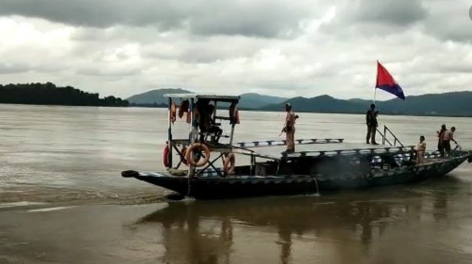Kamal Baruah
Over the centuries, people have learnt to live with rivers. Once upon a time, Huang-he was China’s sorrow. The river killed millions of people since 2nd Century BC from catastrophic floods. In 1955, China successfully controlled the Huang-he by building overflow channels and increasingly taller dikes from its ambitious 50-year construction and flood-control programme. This included extensive dike construction, repair and reinforcement, reforestation and the construction of a series of dams to control the river’s flow, produce electricity and supply water for irrigation. The river has not burst its banks since 1945. River Brahmaputra also has terrifying stories of annual flooding that eat away the entire economy of Assam.
The 2,900km-long trans-boundary Brahmaputra originates as the Yarlung Tsangpo from the Manasarovar, the highest body of freshwater lake in the world. It is fed by the Kailash Glaciers near Mount Kailash in Tibet Autonomous Region. Besides Brahmaputra, this is also the sources of great rivers of Asia, namely the Ghaghara (tributary of Ganga), Sindhu and Sutlej (tributaries of Indus).
After the river flows 2,840 km through Tibet, and receiving waters from tributaries like Nyangchu, Lhasa, Nyang and Parlung, it enters Arunachal Pradesh as River Siang. It appears in the plains as Dihang and after gathering the tributaries Dibang and Lohit, it becomes the Brahmaputra in Assam. The rain-fed Brahmaputra gathers the bulk of its volume out of tributaries. Understanding the Brahmaputra is an on-going process. Localities along its course narrate the effects of the great earthquake of 1950 when innumerable timber logs clogged the river. The river changed colour and carried sulphurous material. The fish in it died. The riverbeds have risen as sediments blocked the river’s course.
Brahmaputra isn’t just a river. It’s a huge sea. It has vastness of water landscape nearly 15km wide at some places. Assam floods are singularly different in terms of their duration and magnitude of erosion. It can’t be controlled merely by strengthening embankment and by anti-erosion measures. The other day, SM Huq, a former chairman of the Central Water Commission in New Delhi, spoke to this writer about his visit to Palasbari in the late 60s to do a study on erosion. What he saw, that was history and beyond one’s imagination.
Assam’s flooding woes continue from the mighty Brahmaputra. The river is part of our lives since childhood. It’s a playmate for us after playing a hard day’s football. We dive into the river with a mighty splash. We saw floods when water swept away our village. There were no embankments to protect us. We had to take shelter on the high ground. We saw the river up and close. We boat on a raft made of banana plantains and fish for food.
The nature of flood in Assam takes a quantum leap every year. Floods have claimed hundreds of human lives; 34 this year; and threatened endangered animal species. Indian Rhinoceros flee to Karbi Hills looking for high ground. Onlookers see herds of elephants blocking the National Highway during the monsoon. Helpless deer wander for safety. Floods damage more than 60 per cent of the total kharif crops every year.
Breaches of embankment due to bank erosion have become a common phenomenon. The heavy silt charge and flash floods of north bank tributaries are pushing the bank of the Brahmaputra southward. Lakhs of hectares of land were eroded by the river and its tributaries. Erosion-prone landmass Majuli got reduced to half from its origin. Palasbari near Guwahati experienced the threat of erosion in 1954. Today its history is unknown.
Assam is geographically situated in the foothills of the NE states. The hills in the surroundings carry huge flow of water to the plains. Most of its large tributaries bring huge quantity of sediments to its beds. The Central Water Commission (CWC) kept hollow promises to protect us. But survival of people alongside the river is still under threat.
Should India go the Chinese way to protect Brahmaputra? Dredging of Brahmaputra was undertaken during 1975 on an experimental basis. This, though, is a huge task and should be a continuous process since sediments get deposited very fast. The traditional sand embankment just can’t protect Assam. It needs long-term planning. The cost of such undertaking would be enormous. We need a lasting solution, not just flood relief, as Assamese live by the Brahmaputra.
The writer is an ex-air warrior.
